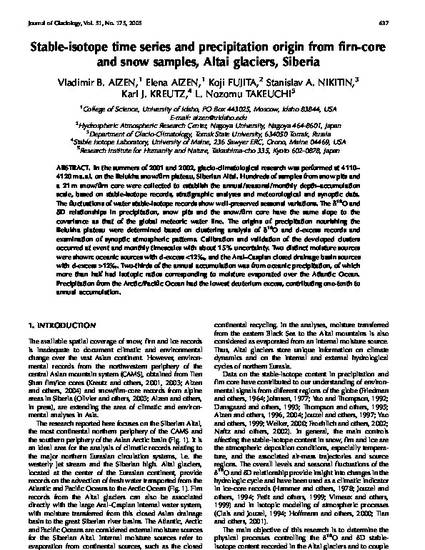
In the summers of 2001 and 2002, glacio-climatological research was performed at 4110-4120 m a.s.l. on the Belukha snow/firn plateau, Siberian Altai. Hundreds of samples from snow pits and a 21 m snow/firn core were collected to establish the annual/seasonal/monthly depth-accumulation scale, based on stable-isotope records, stratigraphic analyses and meteorological and synoptic data. The fluctuations of water stable-isotope records show well-preserved seasonal variations. The delta(18)O and delta D relationships in precipitation, snow pits and the snow/firn core have the same slope to the covariance as that of the global meteoric water line. The origins of precipitation nourishing the Belukha plateau were determined based on clustering analysis of delta(18)O and d-excess records and examination of synoptic atmospheric patterns. Calibration and validation of the developed clusters occurred at event and monthly timescales with about 15% uncertainty. Two distinct moisture sources were shown: oceanic sources with d-excess < 12 parts per thousand, and the Aral-Caspian closed drainage basin sources with d-excess > 12 parts per thousand. Two-thirds of the annual accumulation was from oceanic precipitation, of which more than half had isotopic ratios corresponding to moisture evaporated over the Atlantic Ocean. Precipitation from the Arctic/Pacific Ocean had the lowest deuterium excess, contributing one-tenth to annual accumulation.
Available at: http://works.bepress.com/karl_kreutz/15/
